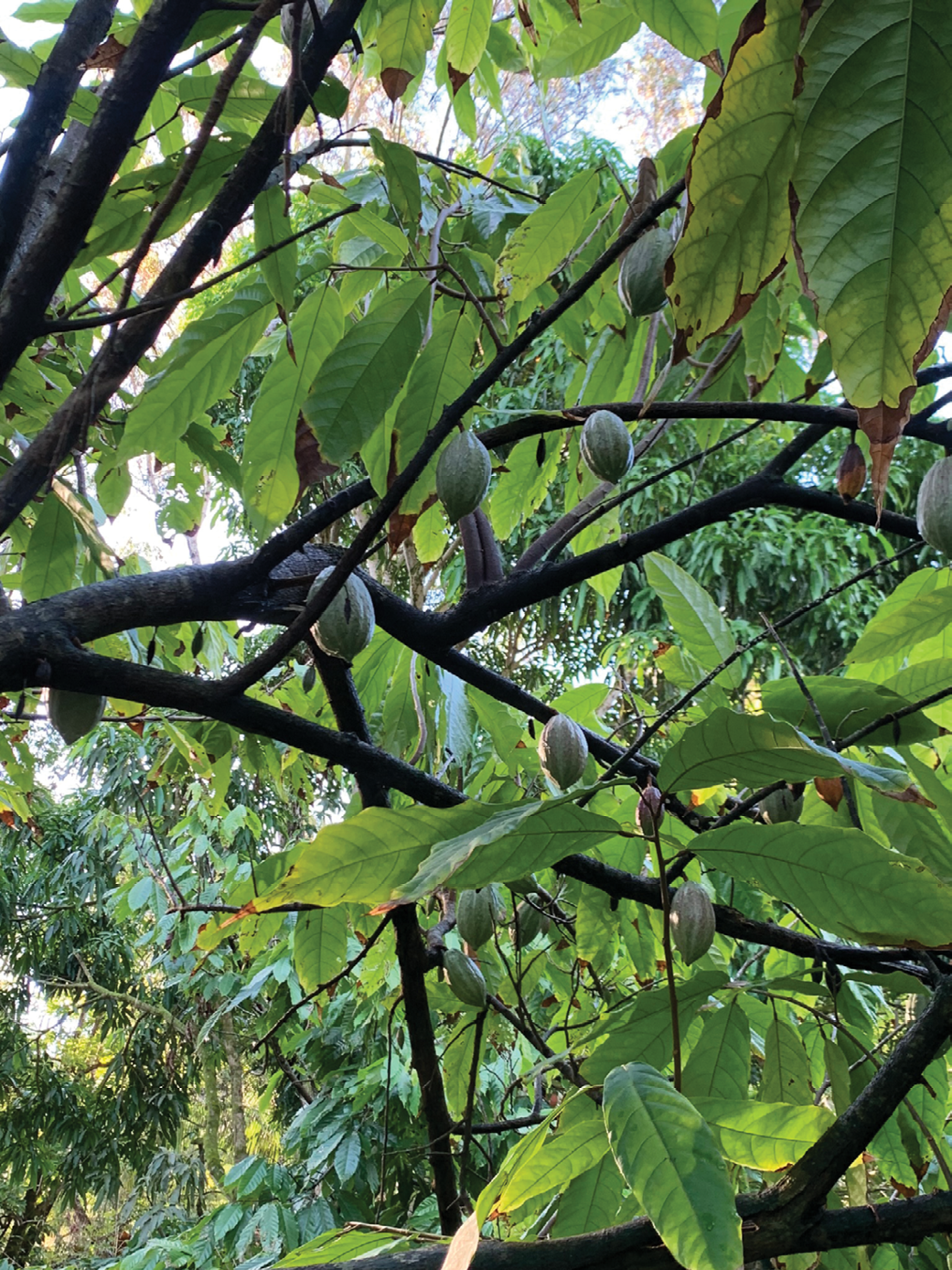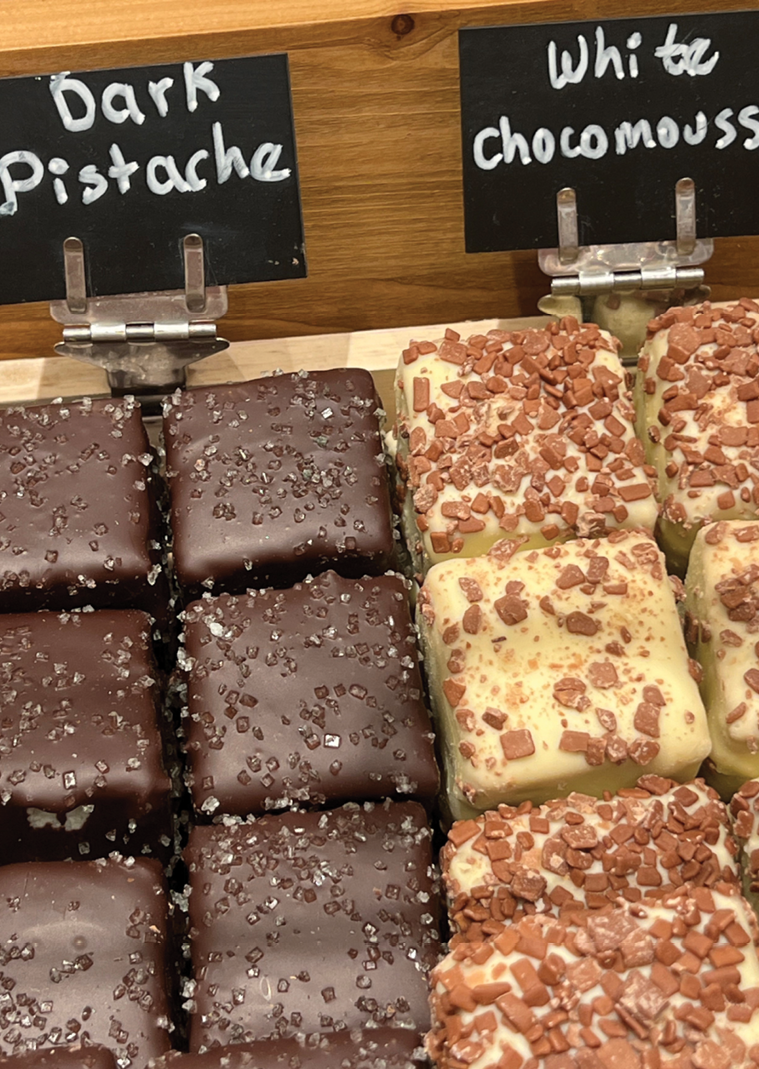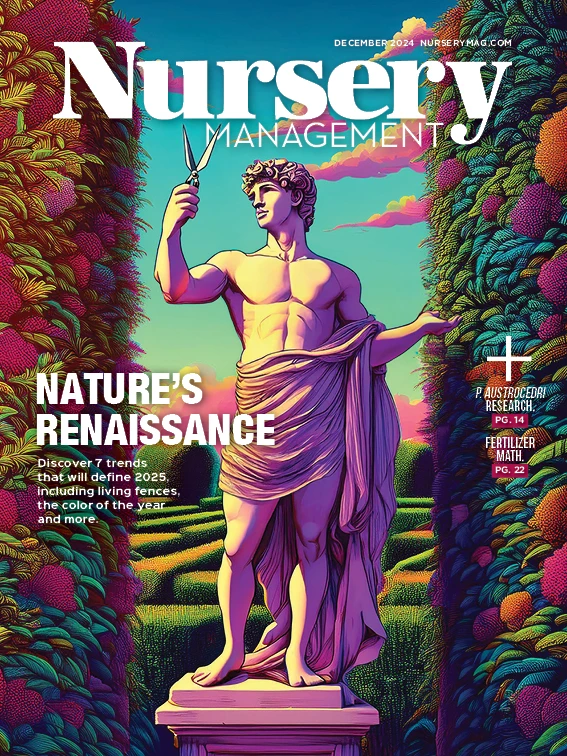
The food of the gods comes from this small evergreen tree.
As I reflect on the past year, 2024 has been full of challenges, adventures, opportunities, and of course, plants! I’m writing this a week before the election and feeling a lot of uncertainty about the future, regardless of the outcome. I can really identify with Forrest Gump right now. “Life is like a box of chocolates. You never know what you’re gonna get.”

I do love chocolate! The lavish, rich smoothness of a Belgian chocolate slowly melting in my mouth makes all the problems of the world temporarily fall away. The chocolate shops in Brugges, Belgium, were a highlight of my trip to Europe last summer. It’s therefore alarming that the source of chocolate, Theobroma cacao, is in peril right now due to climate change.

T. cacao is a small evergreen tree native to the tropical regions of the Americas from southern Mexico to the Amazon basin. The name Theobroma is derived from the Greek and literally translates as “food of the gods.” It has been in cultivation in the Americas for over 5000 years. Cocoa pods and the beans within we’re first fermented to produce an alcoholic beverage. Over the centuries it’s been smoked, used in ritual sacrifices and the beans were used as currency for thousands of years. Chocolate made its way to Europe in the mid-16th century as a delightfully sweet new beverage. It was not until the mid-eighteen hundreds that the modern chocolate confections we all love so much were invented.
T. cacao flowers grow right out of the trunk and older branches of the tree and form ovoid pods that begin green and ripen from yellow to orange or even red, depending on the cultivar group. There are several distinct cultivar groups of cacao in cultivation today. They are Forastero, Criollo and Trinitario. Of these, Criollo is the rarest and most prized for the fine cocoa it produces with little bitterness. Forastero makes up the bulk of world cocoa production. Around 80% of the world’s cocoa is produced in Africa and Indonesia. Climate change has caused crop failures or reduced production in Africa for the past three years, driving the price of chocolate to all-time highs.
T. cacao is not particularly difficult to grow in a greenhouse. I’ve been given many cacao pods over the years and the key to success is to open the pod as soon as you get it to remove the beans. There will be anywhere from 40-100 beans in a mature pod. Sometimes the beans have already started to germinate, and you can see the white root sprouting out. Lay the beans flat in well-drained soil in four-inch pots and don’t cover them. Place a damp cloth over them for a couple of weeks and keep the temperature around 80° F. Watch for the cotyledons to emerge, and then remove the cloth and keep the seedlings uniformly moist and shaded. T. cacao seedlings grow fast and will be a couple of feet tall in three months. They will produce pods in three to five years.

Explore the December 2024 Issue
Check out more from this issue and find your next story to read.
Latest from Nursery Management
- John Ruter shares UGA's latest woody and herbaceous ornamental plant breeding projects
- Conor Foy joins EHR's national sales team
- Pantone announces its 2026 Color of the Year
- Syngenta granted federal registration for Trefinti nematicide/fungicide in ornamental market
- Get to know Kayela Aeppli
- HILA 2025 video highlights: John Gaydos of Proven Winners
- Q&A with Justin Bartlett
- Be the best choice





